当前位置:网站首页>Principle and characteristic analysis of triode
Principle and characteristic analysis of triode
2022-04-23 06:47:00 【tilblackout】
- Before reading this article, please make sure you master PN junction 、 Detailed explanation and application of diode principle The content in
- For the symbol of triode 、PNP and NPN The basic knowledge such as the difference between is not explained here
1 principle
Start with NPN Take triode as an example :

- The collector electrons in the figure should be painted less ( Less doping ), The size should be drawn higher ( Large size , Not easy to heat ), It will be explained later
The base and emitter are positively biased , So the electrons from the emitter will spread to the base . Due to collector and base PN The knot is reversed , Its depletion region increases , Direction is N->P The electric field increases . At this time, increasing the voltage is not like doping with normal concentration PN The drift current is almost constant with the increase of voltage , Because the doping of the base is very little and very thin , So the electrons that diffuse to the base have little time to combine with the holes in the base ( Only a few are combined ), Most electrons can easily reach the top and reverse bias PN The internal electric field of the junction enters the collector .
Process manufacturing :
(1) The base : Must be very thin 、 The doping concentration is very low
(2) The emitter : Inject electrons into the base , So it needs a lot of doping
(3) Collector : Strictly speaking , No matter how much the collector is doped , But we don't want to C-B Of PN The junction is broken down , Therefore, it is necessary to ensure a large breakdown voltage . Recall the zener diode , Its doping is high , So the breakdown voltage is small . Now the base doping is very little , So the less doped the collector , The greater the breakdown voltage . Therefore, the doping of collector should be less .
- In some transistors, the doping concentration of collector is between the base and emitter , In some transistors, the collector is less doped than the base , So there are no hard and fast rules
(4) Size : The collector size should be larger than the base , In this way, when the current flows , It won't get hot so easily ; The base is highly doped , So it can't be too big .
So the actual triode may be like this :
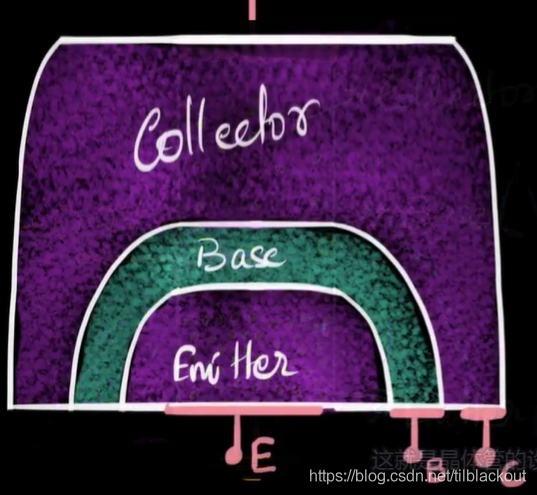
2 characteristic
Take the common emitter amplifier as an example
2.1 electric current
The electrons coming out of the base and the electrons coming out of the collector will eventually return to the emitter (B、E、C Finally, they are grounded ), As an injection of electrons . namely IE=IB+IC.
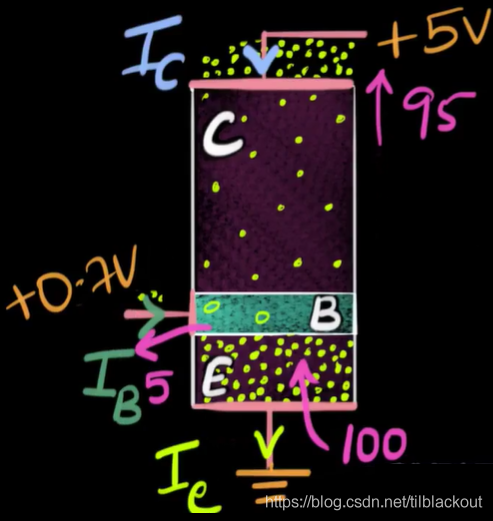
2.2 Input features :IB And UBE
- When UBE<0.7V when ,B and C Very little current
- UBE>0.7V when ,IB a surge , however IB be relative to IC It's still very small .
- If you increase UCE, Above PN The depletion region of the junction increases , be UBE It needs to be bigger ,IB Will start to surge . But this change is small , So you can say UCE No effect UBE Size .
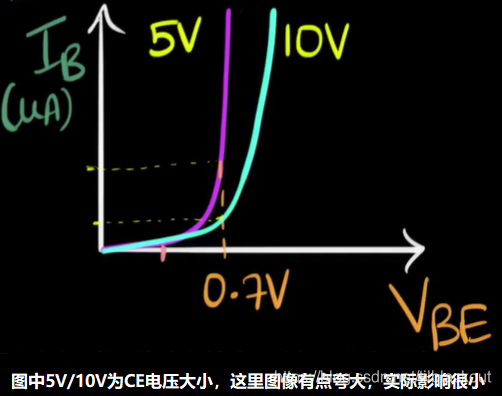
2.3 output characteristic :Ic And UCE
When UC The value of is less than 0.7V when , above PN The knot is positive and partial . The assumption is 0.3V,UBC=0.7-0.3V=0.4V, The width of depletion region decreases ,C Polar electrons may spread to B extremely , and E Polar diffusion to B Polar electrons , It will still spread to C extremely , But it's not as easy as it used to be . So at this time IC Will follow UCE To reduce by .
2.4 Zoom in 、 saturated 、 end
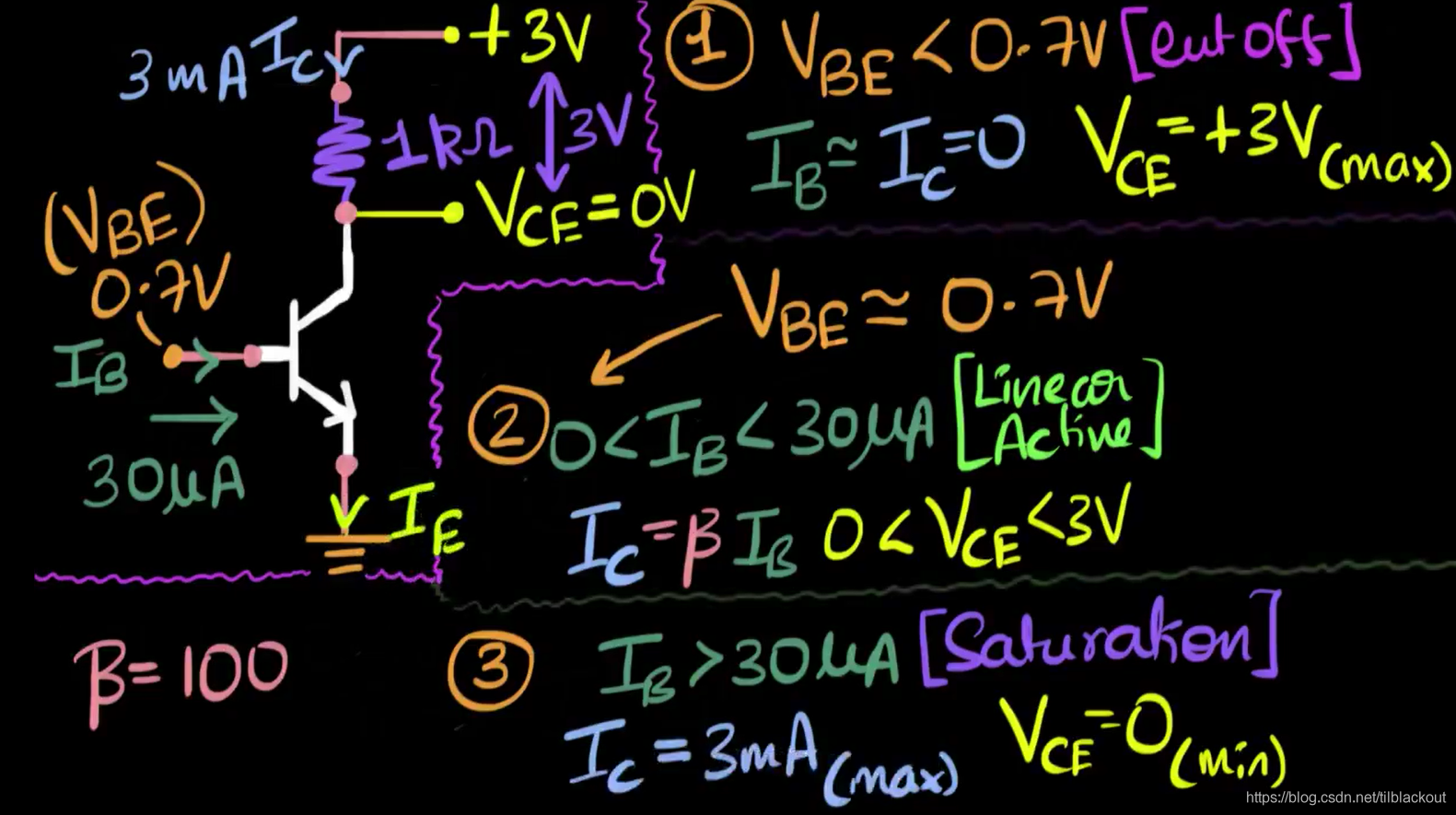
As shown in the figure , Suppose the transistor amplification factor is 100 times ,C Pole connection 3V Then one 1K resistance , here C Maximum current of pole ICmax=3mA.
(1) Cut off zone : When UBE<0.7V Time is up , here IB≈IC=0,C The pole resistance has no voltage drop , therefore UCE To the maximum 3V
(2) Zoom in :UBE≈0.7V And β*IB<ICmax, As mentioned earlier, this pressure drop is almost unaffected by UCE influence , about Si It's usually 0.7V. here ,0V<UCE<3V.
(3) Saturation zone :UBE≈0.7V And β*IB>ICmax, because C The polar current cannot be higher than 3mA, therefore IC Keep at maximum 3mA Can't rise any higher ,UCE=0.
Switch action :
- In the saturation zone ,C Pole current max 、UCE=0, amount to CE Pole short circuit
- When the cut-off zone ,C There is no current at all 、UCE To the maximum , amount to CE Pole open circuit

版权声明
本文为[tilblackout]所创,转载请带上原文链接,感谢
https://yzsam.com/2022/04/202204230549282938.html
边栏推荐
- cv_bridge 与opencv 版本不匹配的解决
- [UDS unified diagnosis service] i. diagnosis overview (2) - main diagnosis protocols (K-line and can)
- js获取链接?后边的参数名称或者值,根据url ?后的参数做判断
- CUDA environment installation
- Generate random number
- TensorFlow张量介绍
- 基于Keras的时装分类案例
- Notes on advanced points of C language 2
- Interprocess communication - mutex
- [opencv] use filestorage to read and write eigenvectors
猜你喜欢
VHDL-任意分频器(50%占空比)

Set up a personal blog of jpress

【UDS统一诊断服务】二、网络层协议(2)— 数据传输规则(单帧与多帧)

进程管理命令
![[UDS unified diagnosis service] IV. typical diagnosis service (1) - diagnosis and communication management function unit](/img/4f/7ca6505b545fb825b0dba36f474da7.png)
[UDS unified diagnosis service] IV. typical diagnosis service (1) - diagnosis and communication management function unit

深蓝学院激光slam理论与实践 -第二章(里程计标定)作业
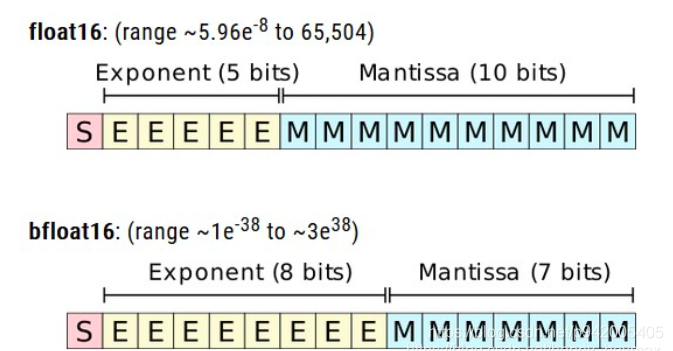
浮点数双精度,单精度以及半精度知识总结

Eigen 学习总结
![[ThreadX] ThreadX source code reading plan (I)](/img/e0/f182a101af24581c808e1d16a0c1fc.jpg)
[ThreadX] ThreadX source code reading plan (I)

基于SSD的物体检测案例实现
随机推荐
日志写法(带时间)
往String原型上封装一个时间戳转日期的方法
sqlite3加密版
OpenCV使用 GenericIndex 进行 KNN 搜索
Notes on advanced points of C language 5
undefined reference to `Nabo::NearestNeighbourSearch
[stepping on the pit] MELD in win11 wsl2 cannot be used normally. Problem repair
SSH 公钥 私钥的理解
C语言进阶要点笔记4
Interprocess communication - mutex
微信小程序之 js 时间戳/1000 转换 秒,六个小时后,一天后,本周五 选项计算时间
[UDS unified diagnostic service] i. overview of diagnosis (4) - basic concepts and terms
C语言中volatile的使用
Eigen 学习总结
FOC 单电阻采样 位置环控制伺服电机
[UDS unified diagnostic service] IV. typical diagnostic service (2) - data transmission function unit
2020 Jiangsu Collegiate Programming Contest-A.Array
C语言进阶要点笔记2
Installation of GCC, G + +, GDB
Using printf in MFC
